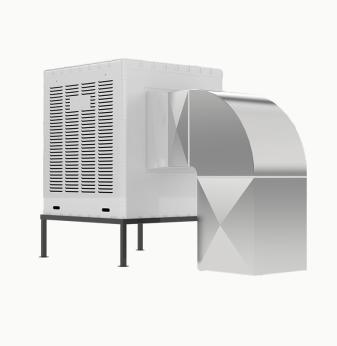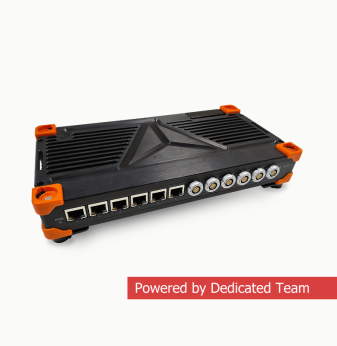The Digital Shield: How Modern Cybersecurity Systems Protect Industrial Facilities

In the era of industrial digitalization, where Industry 4.0 and the Industrial Internet of Things (IIoT) concepts are becoming a reality, cybersecurity has taken center stage. Industrial facilities, once isolated from the outside world, are now exposed to the same digital threats as corporate networks. In this article, we'll explore key approaches to developing cybersecurity systems for industrial enterprises, provide concrete examples and statistics, and discuss Promwad's role in this critical area.
Why Has Industrial Cybersecurity Become a Priority?
According to IBM's "Cost of a Data Breach Report," in 2022, the average cost of a data breach for industrial enterprises reached $4.35 million. These figures underscore the severity of the consequences that can arise from cyberattacks. Loss of data confidentiality, equipment malfunction, and production downtime can lead to significant financial and reputational losses.
Key Threats to Industrial Facilities:
- Ransomware Attacks: Encrypting data and blocking access to critical systems with ransom demands.
- Phishing and Social Engineering: Deceiving employees to gain access to confidential information or infect systems with malware.
- Targeted Attacks on SCADA and PLC Systems: Disrupting the operation of technological process control systems, which can lead to accidents and disasters.
- Compromise of IIoT and IoT Devices: Exploiting vulnerabilities in connected devices to penetrate the network and conduct attacks.
Statistics on Cyberattacks on Industrial Facilities:
| Type of Threat | Incident Share (%) |
| Ransomware | 32% |
| Phishing Attacks | 27% |
| Targeted SCADA and PLC Attacks | 23% |
| IIoT and IoT Device Breaches | 18% |
Key Approaches to Developing Protection Systems:
- Perimeter Defense and Network Segmentation:
- Segmenting industrial networks into separate zones reduces the risk of attack propagation. Firewalls and VPN solutions prevent unauthorized access.
- Example: Implementing a demilitarized zone (DMZ) to isolate critical systems from the external network.
- Monitoring and Threat Detection:
- Modern network traffic monitoring solutions, Intrusion Detection Systems (IDS), and Security Information and Event Management (SIEM) systems provide early threat detection and rapid incident response.
- Example: Using AI-powered SIEM to detect anomalous behavior in network traffic.
- Multi-level Authentication and Access Control:
- Implementing two-factor (2FA) or multi-factor authentication (MFA) reduces unauthorized access risks. Regular audits of access rights help secure critical data.
- Example: Requiring biometric authentication for access to critical control systems.
- Regular Software and Hardware Updates:
- According to Kaspersky, up to 60% of successful industrial attacks occur due to outdated software. Regular software and firmware updates significantly reduce risks.
- Example: Establishing an automated patch management system for all industrial devices.
- Incident Response Planning:
- Creating and regularly testing incident response plans to minimize the impact of successful cyberattacks.
- Example: Conducting simulated cyberattack exercises to test the effectiveness of response procedures.
- Employee Training and Awareness:
- Educating employees about cybersecurity best practices to prevent phishing attacks and social engineering.
- Example: Conducting regular cybersecurity awareness training sessions for all employees.

Digital Technologies in Cybersecurity:
- Artificial Intelligence (AI) and Machine Learning (ML):
- For anomaly prediction and detection, enabling proactive threat identification.
- For example AI can detect deviations in normal machine operation, that a hacker may have caused.
- Blockchain:
- For data integrity protection and control, ensuring the authenticity of critical information.
- For example, using blockchain to secure audit logs and prevent tampering.
- Cloud Technologies:
- For secure data storage and backup, providing resilience against data loss.
- For example, using cloud-based security information and event management (SIEM) systems.
Promwad's Role in Developing Cybersecurity Solutions:
Promwad offers a comprehensive approach to industrial cybersecurity:
- Development and Implementation of Secure Embedded Software:
- Creating secure firmware for industrial devices, minimizing vulnerabilities.
- We create software with security best practices in mind.
- Audit and Security Assessment of Industrial Networks:
- Identifying vulnerabilities and providing recommendations for improvement.
- We conduct penetration testing, and risk assessments.
- Creation of Threat Monitoring and Analysis Systems:
- Developing custom solutions for real-time threat detection and incident response.
- We can create custom SIEM solutions, and Intrusion detection systems.
Successful Case Study:
Promwad successfully implemented a project for a major energy equipment manufacturer, achieving:
- 75% reduction in successful cyberattacks.
- 40% decrease in equipment downtime.
- Increased trust in the company's digital infrastructure.
Future Prospects of Industrial Cybersecurity:
Gartner predicts industrial cybersecurity spending will rise to $22 billion by 2025, highlighting the importance of investing in digital infrastructure protection today. The future of industrial cybersecurity will likely involve:
- Increased use of AI and ML for threat detection and response.
- Greater adoption of cloud-based security solutions.
- Enhanced collaboration between industry and government to address cyber threats.
- Zero trust security architecture implementation.
Conclusion:
Developing effective cybersecurity systems is critical for any industrial enterprise. Timely investments in infrastructure protection can prevent serious losses and ensure uninterrupted production processes. Promwad is always ready to assist you in implementing cybersecurity projects and ensuring reliable protection for your business.
Learn more about Promwad's cybersecurity solutions:








